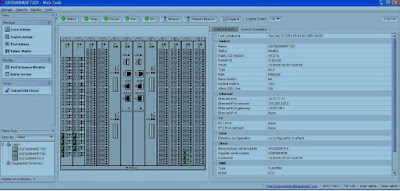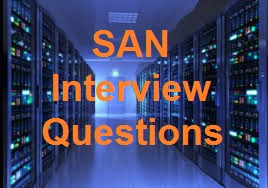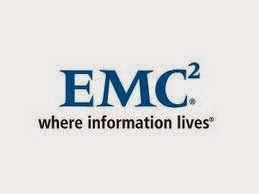This is the next part of the 50 questions shared earlier. Below are some of the frequently asked Storage (SAN) basic interview question and answers. Check the Storage Area Networks (SAN) basic & advanced concepts page in this site to learn more SAN basics.
Storage Area Networks (SAN) Basic concepts Interview Questions and Answers
51. what are FC protocols?
Ans :- i)FCP
iii)IFCP
iv)FCOE
52. FC tolpologies?
i)Point –Point
iii)Switched Fabric
53. Types of Logis?
Ans :- i)FLOgi
ii)PLOGI
54. What is ISL?
Ans:- Inter switch Link physical connection between two switches.
With E-Port .It Aggregates the bandwidth
Ans :- >portcfgtrunk portID 1
56. How to check zone status?
Ans :- >zoneshow zonename
Domain ID name/ID of the switch and port id means port number.
58. What is dark fiber?
Ans :- lease line cable which is established but not in use called Dark Fiber.
59. SAN topologies?
Ans :- i)Point –Point
ii)FC_AL
iii)Switched Fabric
60. Diff b/w brocade 3850 & latest Model ?
Ans : Brocade 3850 supports 16, 32 ports & 5100 supports 8 gbps -40 ports
61. How to add license in switch?
Ans :- >licenceshow
>licenceadd “key”
62. Diff b/w DAS & NAS?
DAS -> Direct Attached Storage
NAS -> Network Attached storage
63. RAID LEVELS?
RAID 0:-Concatination /Stripping min 2 disks max 8 disks
RAID 1:- Mirroring min 2 disks max 8 disks
RAID2:-Bit level striping min 2 disks max 8 disks
RAID 3 :-Byte level striping with fixed parity to perform this we need to have m in 3 disks max 15 disks
RAID 4:-Block level striping with fixed parity to perform this we need to have m in 3 disks max 15 disks
RAID 5 :- striping with Distributed parity to perform this we need to have min 3 disks max 15 disks
RAID 6:- Block level striping with Distributed parity to perform this we need to have min 4 disks max 16 disks
RAID 10: Stripped mirror to perform this we need to have min 4 disks max 16 disks
RAID 01 :-mirror stripped to perform this we need to have min 4 disks max 16 disks
64. How to take switch backup?
Ans: -by doing of >configupload
After that Through FTP we need to give server name
IPaddress
UserID:
Password:
Of target server here we can save the configuration of the switch.
65. What is port address?
FCID , it is 24 bit address contains Domain Id, Port Number & Loop Number
66. HBA ?
A: Host Bus Adaptor , it resides in the Host. It is Network interface card.
67. Port swapping ?
A: it is a process of when one port is failure , the other port is changed as a communication port
68. What is meant by up streaming and down streaming?
(upstream) The ISL is an upstream path toward the principal switch of the fabric.
(downstream) The ISL is a downstream path away from the principal switch of the fabric.
(Trunk Primary) The port is the master port in a group of trunking ports.
Up If the ISL is connected and the link is up
Down No ISL is connected
69. How to start Automated config upload?
A: automate configuration











